Desmond Doss Was the Only Conscientious Objector to Receive the Medal of Honor in World War II
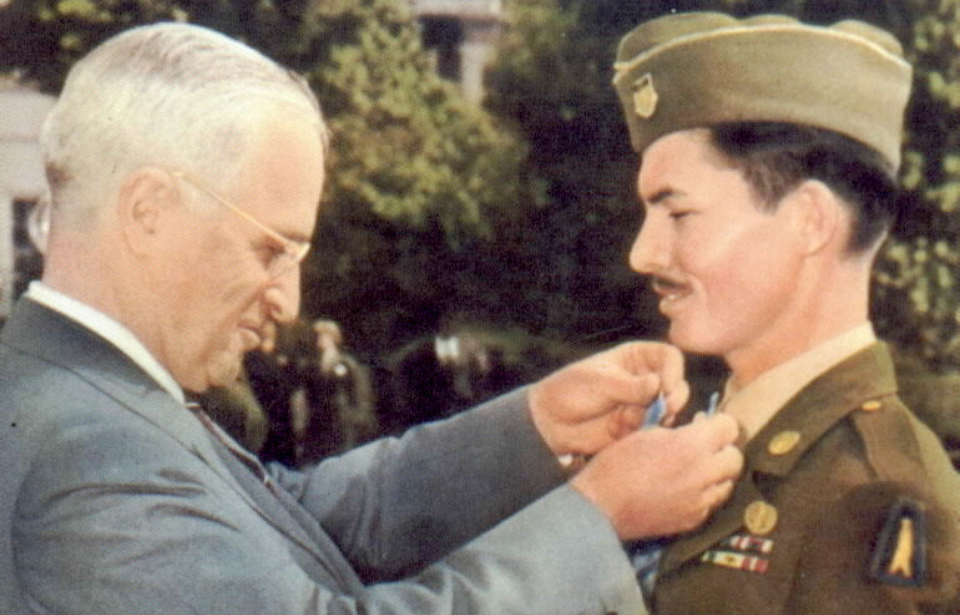
US Army Medic Cpl. Desmond Doss was an extraordinary figure in the annals of military history who defied conventional norms and exemplified unwavering courage in the face of adversity. His efforts afforded him the unique distinction of being the first conscientious objector to receive the Medal of Honor. His profound commitment to his faith and unyielding dedication to saving lives set him apart from his comrades.
Desmond Doss was exempt from mandatory enlistment
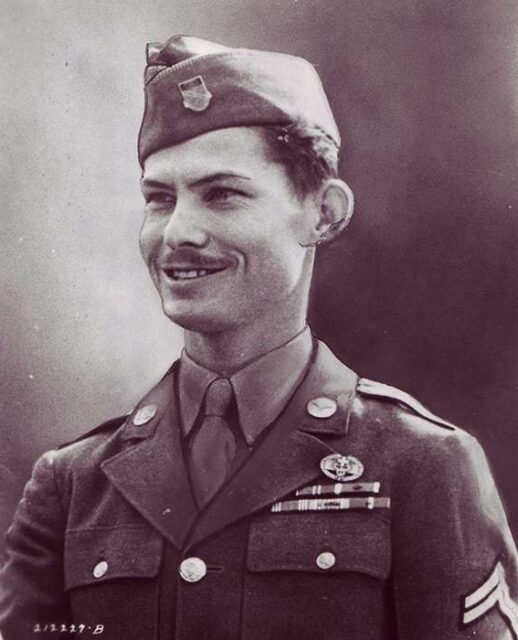
Desmond Doss, 1945. (Photo Credit: US Army / Wikimedia Commons / Public Domain)
Desmond Doss was born to William and Bertha Doss in Virginia on February 7, 1919. He had an extremely unique upbringing, as his family were staunch Seventh-day Adventists. This meant he ate primarily a vegetarian diet, honored Sabbath and believed in non-violence. This was further instilled in him while attending a religious school up until the eighth grade, at which point he entered the workforce.
Doss first worked for a lumber company during the Great Depression, before becoming a joiner at a Virginian shipyard. He was still employed there when the United States entered the Second World War. His job was considered essential to the war effort, so Doss was exempt from mandatory enlistment. However, when the time came and he was drafted, he chose to forgo deferment and enlist in the US Army Medical Corps.
A pacifist at war
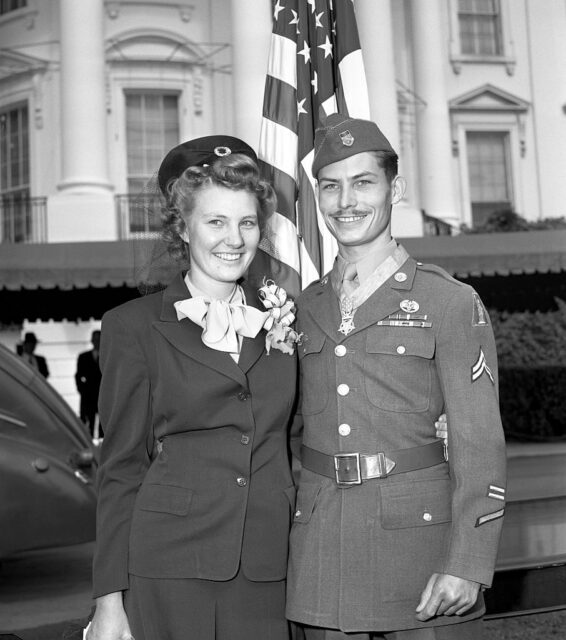
Desmond Doss with his wife, Dorothy, following ceremonies at the White House, during which he was awarded the Medal of Honor, 1945. (Photo Credit: Bettmann / Getty Images)
As a pacifist, Desmond Doss refused to carry a weapon and joined the service as a conscientious objector – although, he called himself a conscientious cooperator. He was allowed to complete basic training without handling a gun. Not only that, but he insisted on keeping Sabbath while at boot camp, meaning he wouldn’t complete any work or other duties on Saturdays.
The combination of his religious views and how they played out in training made Doss a target of the other men. They consistently harassed him, and one individual even threatened, “Doss, when we get into combat, I’ll make sure you don’t come back alive.”
Some would throw shoes at him during prayer, while his commanding officers tried to have him discharged on the grounds of “mental illness.” When this failed, they attempted to have him court-martialed for refusing to take up a rifle. This, too, proved unsuccessful.
Desmond Doss’ service prior to the Battle of Okinawa
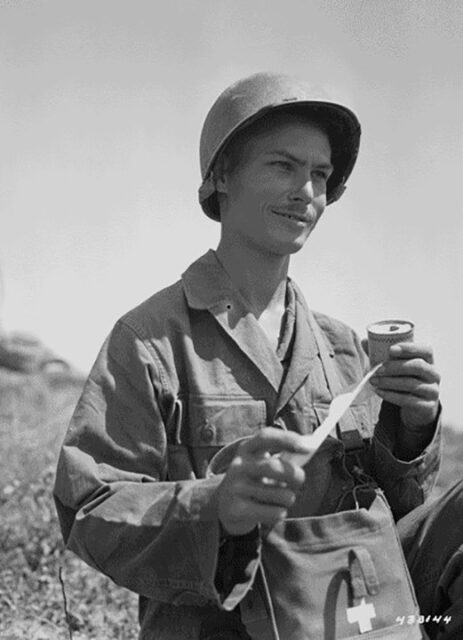
Desmond Doss carrying his medic’s bag in Okinawa, 1945. (Photo Credit: US Army / Wikimedia Commons / Public Domain)
Desmond Doss completed his training and was assigned as a medic with the 2nd Platoon, Company B, 1st Battalion, 307th Infantry Regiment, 77th Infantry Division. Undoubtedly his best-known actions were during the Battle of Okinawa, but this wasn’t the first time he saw combat.
The 77th were first sent to Guam in July 1944. While there, Doss quickly earned a reputation for his bravery, treating his injured comrades even under the heaviest of enemy fire. For his actions, he was awarded a Bronze Star.
The 307th was eventually transferred from Guam to Leyte, where Doss continued his stellar medical aid in combat, for which he was awarded a second Bronze Star. By this point, he’d more than proven himself to his unit as someone who would risk his own life to save theirs.
Legendary actions at Hacksaw Ridge
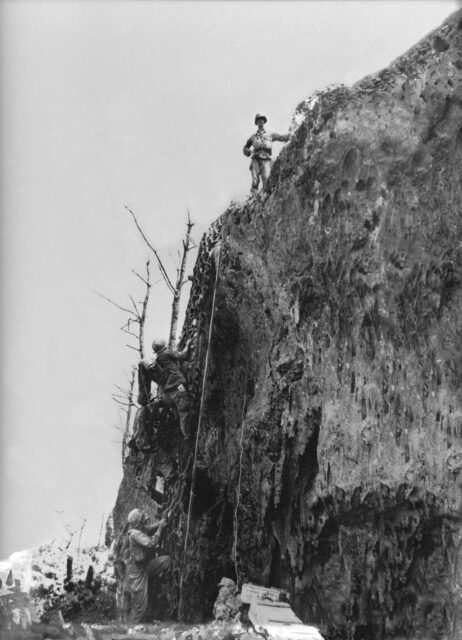
Desmond Doss at the top of the Maeda Escarpment, 1945. (Photo Credit: US Army / Wikimedia Commons / Public Domain)
This was a sentiment Desmond Doss proved beyond a shadow of a doubt when he and his men were sent to Okinawa. The 307th Infantry Division was moved into position to fight the Japanese, who had a strong hold on the Maeda Escarpment, better known as Hacksaw Ridge.
A Company had tried to take the hill a few days earlier, but was nearly obliterated. On May 2, 1945, Doss, B Company and the few remaining soldiers from A Company attempted a second assault. The fighting was, to say the least, brutal. Doss was as courageous as ever, yet again treating soldiers while under heavy fire. To make matters worse, he was standing defenseless, having taken off all medic markings; the Japanese had learned to target them.
On May 5, US troops were ordered to retreat, yet Doss refused because many of his injured comrades were still on Hacksaw Ridge. He retrieved an estimated 75, painstakingly lowering each of them down to troops waiting below the escarpment.
Further bravery
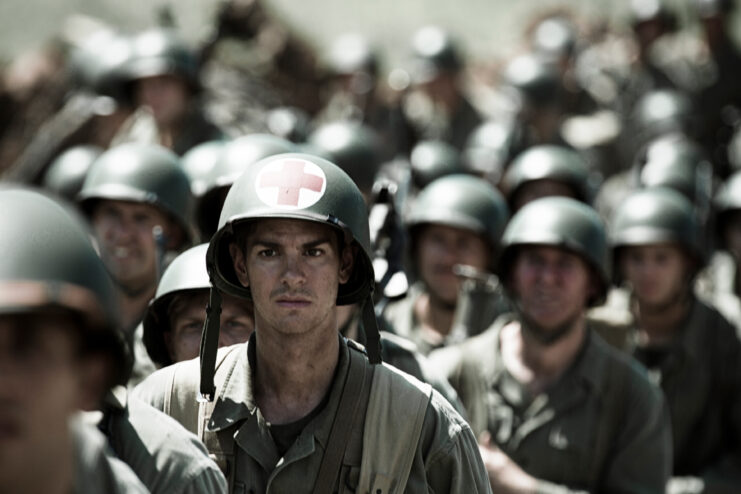
Hacksaw Ridge, 2016. (Photo Credit: yassi / Summit Entertainment / MovieStillsDB)
Miraculously, Desmond Doss remained uninjured. He stayed on Okinawa with his men until he was finally wounded on May 21, 1945. In typical fashion, he remained on the field to tend to the wounded while everyone else took cover from enemy attacks. He was hit in the leg with shrapnel from a grenade.
According to his Medal of Honor citation: “Rather than call another aid man from cover, he cared for his own injuries and waited five hours before litter bearers reached him and started carrying him to cover.”
The other medics were finally able to reach him, but Doss wasn’t on the stretcher for long before he spotted a more seriously injured soldier. He gave up his spot, remaining in the field, where “he was again struck, this time suffering a compound fracture to one arm. With magnificent fortitude he bound a rifle stock to his shattered arm as a splint and then crawled 300 yards over rough terrain to the aid station.”
Desmond Doss returns Stateside
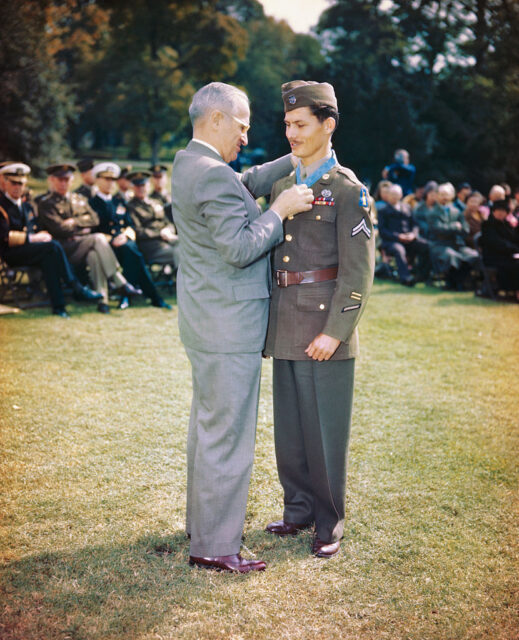
President Harry S. Truman awarding Desmond Doss the Medal of Honor, 1945. (Photo Credit: Bettmann / Getty Images)
As a result of his injuries, Desmond Doss was sent back to the US. He was awarded the Medal of Honor on October 12, 1945 by President Harry S. Truman, who said to him, “I’m proud of you. You really deserve this. I consider this a greater honor than being president.” This made Desmond Doss the only conscientious objector to be awarded a Medal of Honor for his World War II service.
Doss’ commanding officer was also present at the ceremony and had a gift of his own to give. The medic had always carried a Bible with him in the field, but it was lost when he’d become injured. Supposedly, the men in his unit looked through the battlefield after the fighting was over to find it. It was this Bible that Doss was given, although much worse for wear.
Desmond Doss’ life following World War II
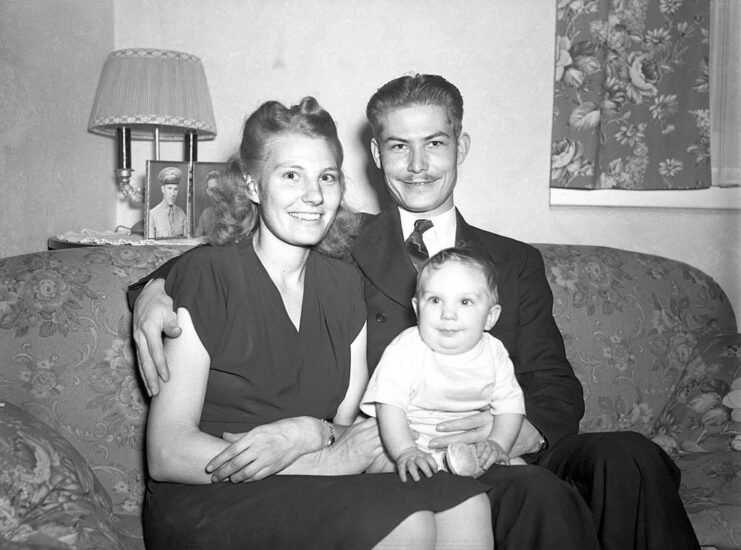
Desmond and Dorothy Doss with their son, Desmond Jr., 1946. (Photo Credit: Bettmann / Getty Images)
In the years after the war, Desmond Doss struggled with the injuries he’d sustained in the field. In 1946, he was diagnosed with tuberculosis, which he’d got while serving in Leyte. It took him five and a half years to recover, during which he lost five ribs and one of his lungs. His arm also never healed properly from the bullet wound and break, meaning he couldn’t go into the carpentry field like he’d initially planned.
Doss remained under military care for the remainder of his life. In 1976, however, the service gave him too high a dose of antibiotics, which made him deaf. In 1988, he was given a cochlear implant.
Doss died on March 23, 2006 after being hospitalized for difficulties breathing. He was buried in Chattanooga National Cemetery.
Hacksaw Ridge (2016)
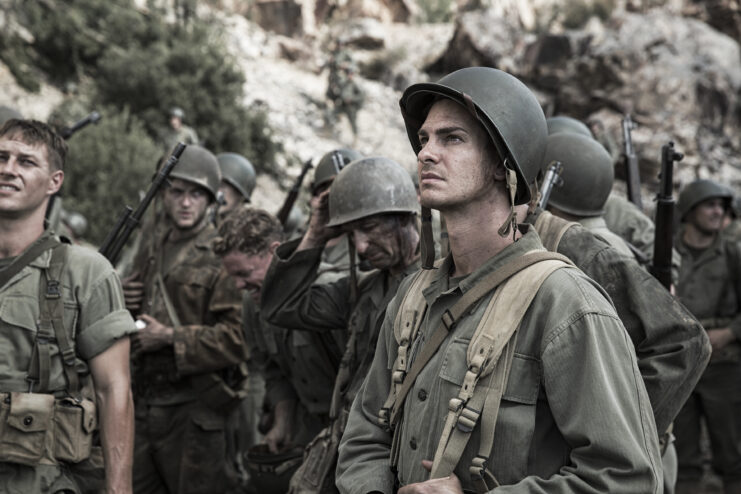
Hacksaw Ridge, 2016. (Photo Credit: massi / Summit Entertainment / MovieStillsDB)
While released after his death, the popular Hollywood film Hacksaw Ridge fictionalizes the life and service of Desmond Doss. It was directed by Mel Gibson, and stars Andrew Garfield. It was first released at the Venice Film Festival, where it was incredibly well-received and the recipient of a 10-minute standing ovation.
Overall, the Hollywood version of Doss’ service was kept quite accurate to the real thing. There were some complaints that it was far too graphic, but there were equal amounts of praise for this, including from Okinawa veterans. Producer Bill Mechanic spoke about this, saying:
“Doss was also a medic, so it’s not like you can just show soldiers getting shot next to him – you have to see what he’s working on. You have to put him in h**l essentially before you can see the decisions that he made and who he was, how strong his faith was and how courageous he was.”





